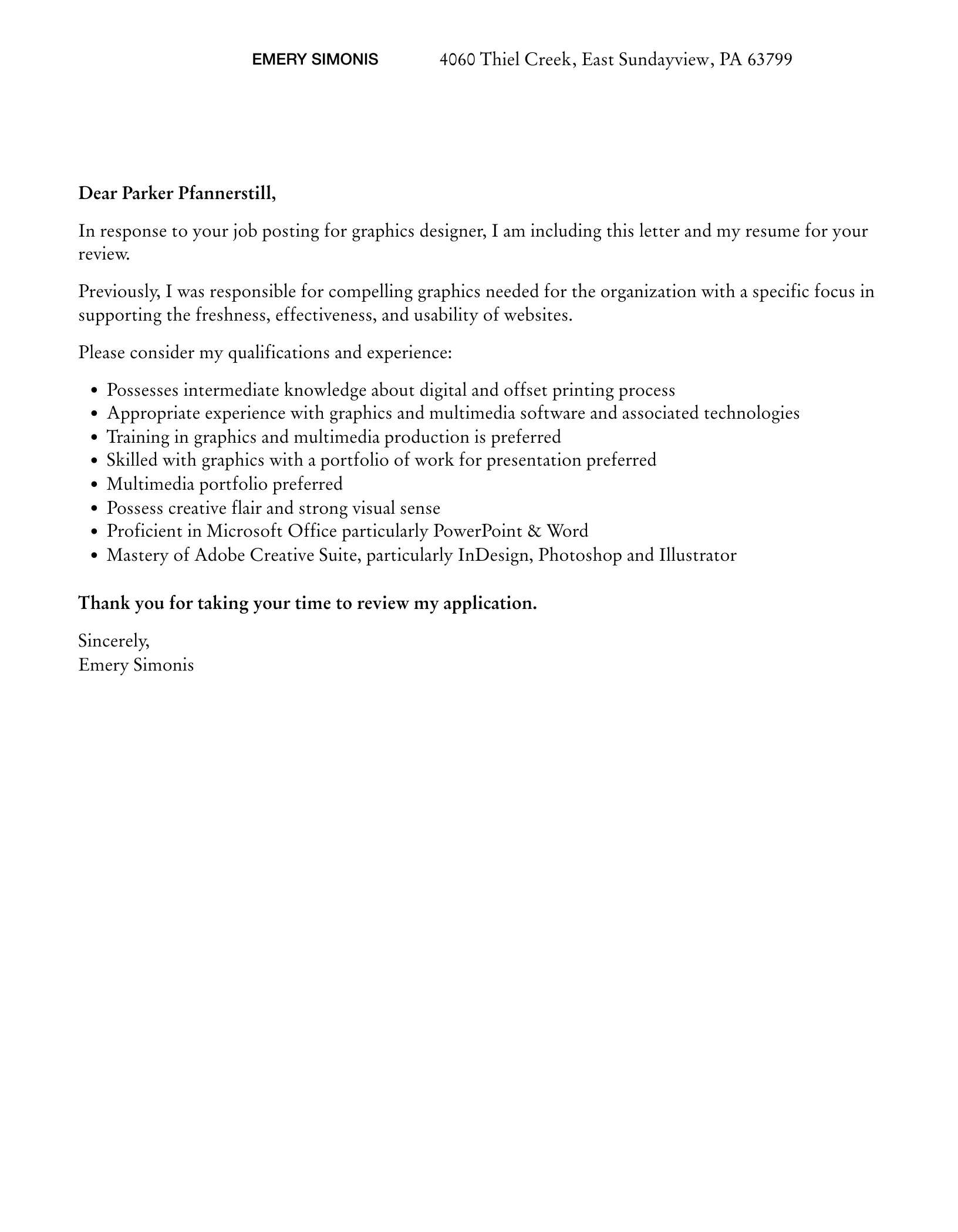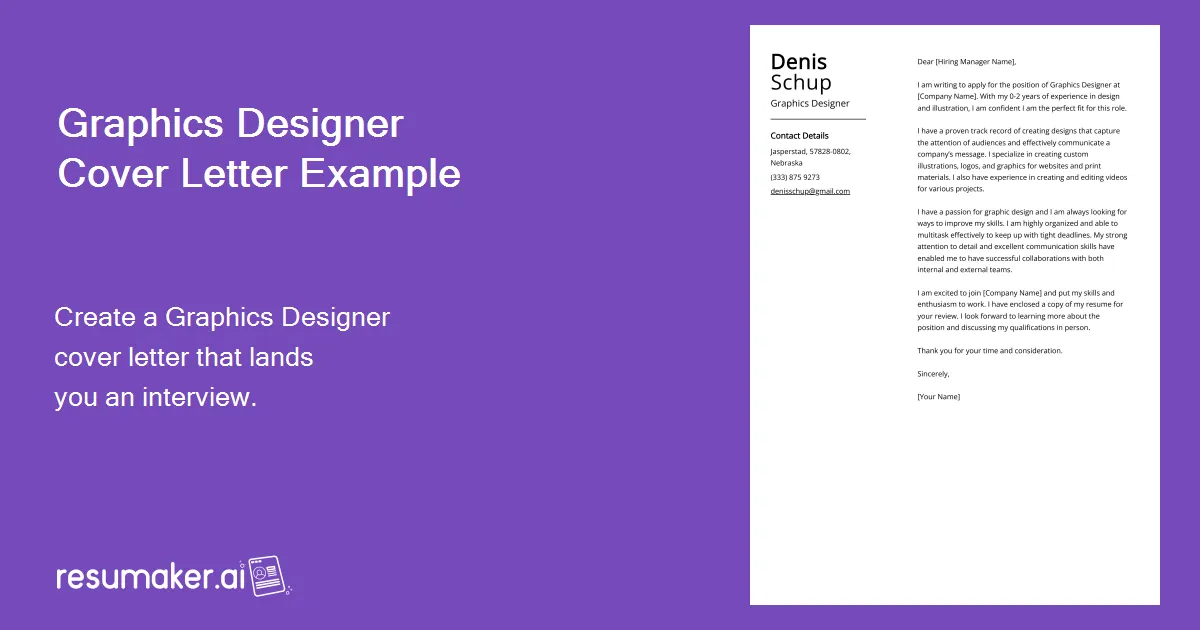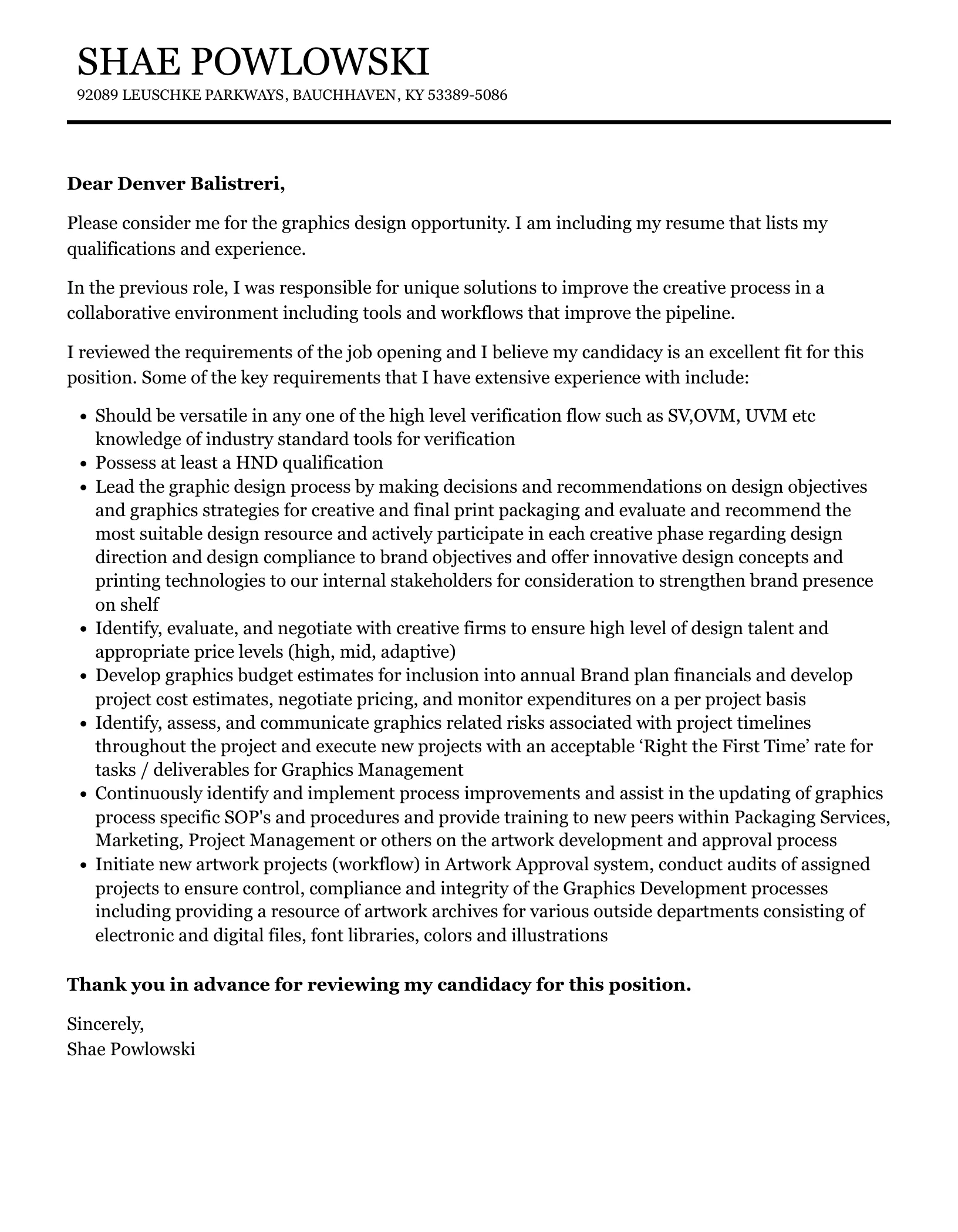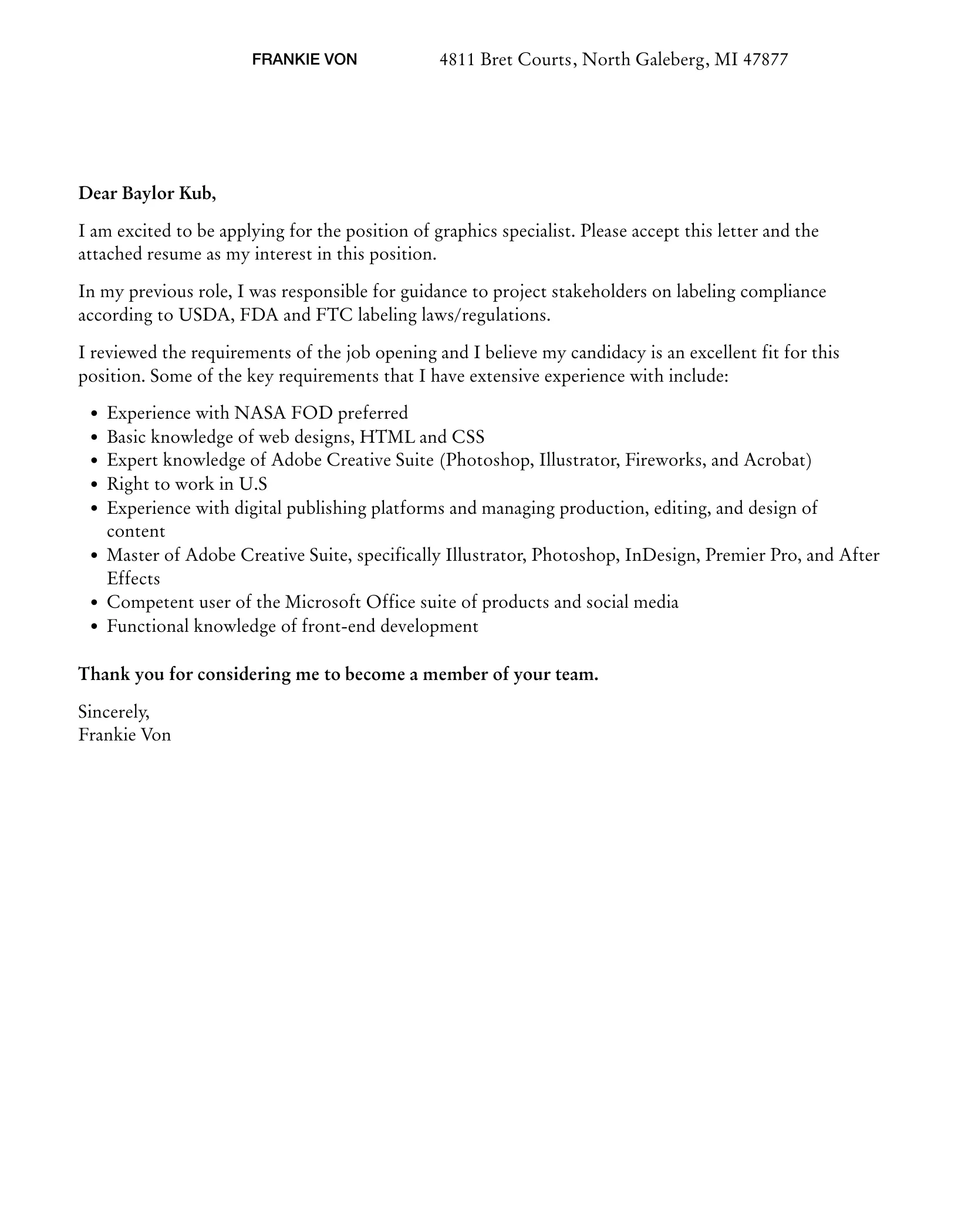What is a Graphics Cover Letter?
A graphics cover letter is a crucial document that accompanies your resume when applying for graphic design or related roles. It serves as your first impression, allowing you to introduce yourself, express your interest in the position, and highlight your most relevant skills and experiences. Unlike a resume, which provides a factual overview of your career, a cover letter lets you showcase your personality, writing style, and enthusiasm for the role. It’s your opportunity to connect with the hiring manager on a more personal level and explain why you are the perfect fit for the job. Consider it as a chance to make a compelling case for why the company should interview you.
Why is a Graphics Cover Letter Important?
In the competitive field of graphic design, a well-crafted cover letter is essential. It distinguishes you from other applicants who may only submit a resume. It allows you to demonstrate your communication skills, which are vital for any design role, as you’ll be collaborating with clients and team members. A cover letter gives you space to elaborate on specific projects, discuss your design philosophy, and explain how your skills align with the company’s values and needs. It also shows that you’ve taken the time to research the company and tailor your application to their specific requirements, indicating genuine interest and attention to detail. This level of personalization can significantly increase your chances of getting noticed and securing an interview.
Key Elements of a Graphics Cover Letter

A strong graphics cover letter includes several key elements. Start with a professional header that includes your contact information and the date. Address the hiring manager directly, if possible, by name; if not, use a general salutation like “Dear Hiring Manager.” In the opening paragraph, state the position you’re applying for and how you learned about the opportunity. In the body, highlight your most relevant skills, experiences, and projects. Use specific examples to illustrate your capabilities and demonstrate your problem-solving abilities. Explain why you are interested in the company and what you can bring to the role. Conclude with a call to action, expressing your eagerness for an interview and thanking the reader for their time and consideration.
Formatting Your Graphics Cover Letter
Proper formatting is vital for a professional-looking graphics cover letter. Use a clean, easy-to-read font like Arial or Times New Roman in a 10-12 point size. Maintain consistent spacing throughout the document, typically using single or 1.15 line spacing. Use clear headings and subheadings to break up large blocks of text and guide the reader. Keep your paragraphs concise and focused, with each paragraph addressing a specific point. Be mindful of the overall layout; avoid excessive blank space or overly crowded text. The goal is to create a visually appealing document that’s easy to read and scan. Ensure your cover letter is well-formatted and reflects your attention to detail.
Showcasing Your Skills and Experience
Your cover letter is an opportunity to showcase your design skills and experience. Highlight your proficiency in relevant software like Adobe Creative Suite (Photoshop, Illustrator, InDesign), Sketch, or other design tools. Mention your experience with typography, color theory, layout design, and branding. Provide specific examples of projects where you successfully applied these skills. Quantify your accomplishments whenever possible – for example, “Increased website conversion rates by 15% through a redesigned user interface.” Tailor your skills to match the job description, emphasizing the abilities that the employer is seeking. Don’t just list your skills; explain how you’ve used them to achieve tangible results. Demonstrate your ability to create effective designs that meet specific client objectives.
Highlighting Relevant Projects

Selecting and highlighting relevant projects in your graphics cover letter is a powerful way to showcase your capabilities. Choose projects that align with the job description and demonstrate your ability to deliver results. Briefly describe each project’s objective, your role, and the outcome. If possible, include a link to your online portfolio or provide a visual example of your work. Focus on projects that highlight the skills and experience the employer is seeking. This shows your ability to apply your design skills to real-world challenges and deliver effective results. Always explain the impact of your work.
Tailoring Your Letter to the Job
A generic cover letter is unlikely to impress. To stand out, tailor your letter to each job you apply for. Research the company, understand its values, and customize your letter to reflect that knowledge. Use the job description as a guide, highlighting the skills and experiences that the employer seeks. Address specific requirements mentioned in the job posting. Show how your qualifications align with the company’s needs. Tailoring your letter demonstrates your interest and commitment to the role, setting you apart from applicants who send out generic applications. It conveys your dedication to finding the perfect fit. Remember, it’s all about showing why you specifically are the best candidate.
Proofreading and Editing Your Cover Letter
Proofreading and editing your graphics cover letter is crucial to ensure it is free of errors and presents you professionally. Carefully review your letter for typos, grammatical errors, and inconsistencies in formatting. Read your letter aloud to catch any awkward phrasing or unclear sentences. It is a good idea to have a friend or mentor review your cover letter, as a fresh pair of eyes can often spot mistakes you may have overlooked. Ensure your contact information is accurate and that you are using a professional email address. A well-proofread cover letter shows attention to detail and demonstrates your commitment to producing high-quality work.
Graphics Cover Letter: Do’s and Don’ts

When crafting your graphics cover letter, adhere to a few key dos and don’ts. Do tailor your letter to each specific job application. Do highlight relevant skills and experiences. Do showcase your personality and writing style. Do include a call to action. Do proofread carefully. Don’t use generic templates without customization. Don’t be overly formal or stiff. Don’t make the letter too long; aim for one page. Don’t include irrelevant information. Don’t forget to proofread and edit thoroughly. Following these guidelines will enhance your cover letter and increase your chances of success.
Graphics Cover Letter: Final Checklist
Before submitting your graphics cover letter, use a final checklist to ensure you haven’t missed anything. Does your letter include your contact information? Did you address the hiring manager by name? Have you highlighted your relevant skills and experience? Are your projects aligned with the job requirements? Is the letter free of errors in grammar and spelling? Does your letter have a strong opening and closing? Have you included a call to action? Is your portfolio link up-to-date? Does the letter reflect the brand’s image? Does the letter look professional? By carefully reviewing this checklist, you can be sure that your cover letter is polished and ready to impress.
